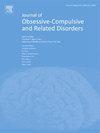Treating disgust in obsessive-compulsive disorder: Clinician perspectives in a survey study
IF 1.5
4区 医学
Q3 PSYCHIATRY
Journal of Obsessive-Compulsive and Related Disorders
Pub Date : 2025-07-01
DOI:10.1016/j.jocrd.2025.100970
引用次数: 0
Abstract
Exposure plus response prevention (ERP) emphasizes fear-reduction strategies, yet many patients have OCD symptoms driven by emotions other than fear—particularly disgust. Although disgust OCD appears to be associated with worse treatment outcomes, ERP might be modified to enhance fit with disgust-based pathology. It remains unknown how clinicians modify ERP for this presentation in practice and to what effect. In this study, 90 mental health clinicians from diverse professional backgrounds completed an online survey assessing their experiences and perceptions applying ERP with disgust OCD. Participants generally viewed ERP to be effective for disgust OCD. Of 25 tailoring strategies surveyed (derived from the empirical literature and authors’ own clinical experiences), most strategies were used commonly and rated as at least “fairly helpful” for both adults and youth. Among the most frequently used ERP modifications were informal functional assessment, emphasizing tolerating discomfort, designing exposures that elicit disgust, and additional acceptance and mindfulness techniques. Neither ERP nor disgust OCD expertise was related to the total number of tailoring strategies endorsed, the endorsement of any given strategy, or the perceived effectiveness of ERP for disgust; however, expertise was related to the perceived helpfulness of 12 tailoring strategies. In addition, 8 novel ERP tailoring strategies were identified from open-ended response items. Results support the view that ERP can be tailored to treat disgust symptoms and highlight the relevance of evaluative conditioning, inhibitory learning, and cognitive-behavioral interventions traditionally less emphasized in ERP. Findings will inform the development of the first comprehensive protocol for disgust OCD. 249/250 words.
治疗强迫症中的厌恶:一项调查研究中的临床医生观点
暴露加反应预防(ERP)强调减少恐惧的策略,然而许多患者的强迫症症状是由恐惧以外的情绪驱动的,尤其是厌恶。尽管厌恶性强迫症似乎与较差的治疗结果有关,但ERP可能被修改以增强与基于厌恶的病理的契合。目前尚不清楚临床医生如何修改ERP在实践中的表现和什么效果。在这项研究中,来自不同专业背景的90名心理健康临床医生完成了一项在线调查,评估了他们在厌恶强迫症中应用ERP的经历和感知。参与者普遍认为ERP对厌恶性强迫症有效。在调查的25种定制策略中(来自经验文献和作者自己的临床经验),大多数策略被普遍使用,并且对成年人和青少年至少“相当有帮助”。最常用的ERP修改是非正式的功能评估,强调容忍不适,设计引起厌恶的暴露,以及额外的接受和正念技术。ERP和厌恶强迫症专业知识都与认可的剪裁策略总数、任何给定策略的认可或厌恶ERP的感知有效性无关;然而,专业知识与12种剪裁策略的感知有用性有关。此外,从开放式回答项目中发现了8种新的ERP定制策略。研究结果支持了ERP可以用于治疗厌恶症状的观点,并强调了评价条件反射、抑制性学习和认知行为干预的相关性,这些在ERP中通常不被重视。研究结果将为厌恶性强迫症的第一个综合方案的制定提供信息。249/250单词。
本文章由计算机程序翻译,如有差异,请以英文原文为准。
求助全文
约1分钟内获得全文
求助全文
来源期刊
CiteScore
4.00
自引率
5.60%
发文量
46
审稿时长
47 days
期刊介绍:
Journal of Obsessive-Compulsive and Related Disorders (JOCRD) is an international journal that publishes high quality research and clinically-oriented articles dealing with all aspects of obsessive-compulsive disorder (OCD) and related conditions (OC spectrum disorders; e.g., trichotillomania, hoarding, body dysmorphic disorder). The journal invites studies of clinical and non-clinical (i.e., student) samples of all age groups from the fields of psychiatry, psychology, neuroscience, and other medical and health sciences. The journal''s broad focus encompasses classification, assessment, psychological and psychiatric treatment, prevention, psychopathology, neurobiology and genetics. Clinical reports (descriptions of innovative treatment methods) and book reviews on all aspects of OCD-related disorders will be considered, as will theoretical and review articles that make valuable contributions.
Suitable topics for manuscripts include:
-The boundaries of OCD and relationships with OC spectrum disorders
-Validation of assessments of obsessive-compulsive and related phenomena
-OCD symptoms in diverse social and cultural contexts
-Studies of neurobiological and genetic factors in OCD and related conditions
-Experimental and descriptive psychopathology and epidemiological studies
-Studies on relationships among cognitive and behavioral variables in OCD and related disorders
-Interpersonal aspects of OCD and related disorders
-Evaluation of psychological and psychiatric treatment and prevention programs, and predictors of outcome.

 求助内容:
求助内容: 应助结果提醒方式:
应助结果提醒方式:


